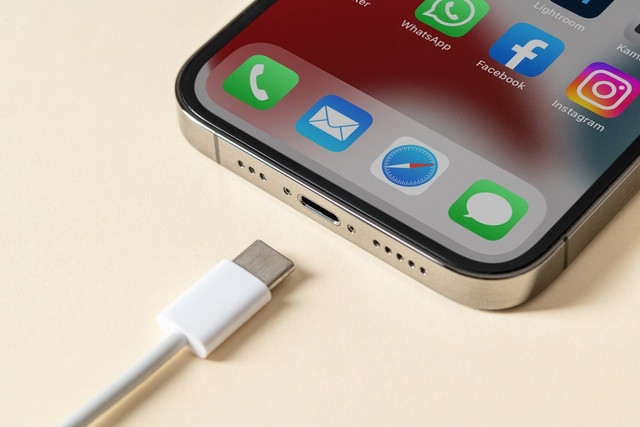The upcoming release of the iPhone 15, expected this September, is generating buzz due to a potentially groundbreaking feature – the inclusion of a universal charging port, a departure from the standard proprietary charging ports used by iPhones to date.
Analysts and media reports suggest that the new iPhone models could be equipped with a USB Type-C charger port on the device’s bottom. This transformation would replace the traditional Lightning port that has graced the bottom of iPhones since 2012. USB Type-C, widely employed in laptops, Android phones, iPads, and various gadgets ranging from Kindles to headphones, could potentially revolutionize the way users charge their devices.
The incorporation of a USB-C connector would bring about several advantages for iPhone users. One of the most significant benefits is the convenience of carrying a single cable for multiple devices, streamlining the charging process during travels. Furthermore, it would foster cross-device compatibility, allowing Android users to borrow chargers from iPhone owners, and vice versa. This shift could also lead to standardization in educational institutions and workplaces, where a single type of charger could cater to a diverse array of devices. Additionally, the transition to USB-C might enable iPhones to access faster charging speeds, enhancing user experience.
Although Apple has yet to officially confirm the introduction of USB-C charging ports in the new iPhones, several indications point to the likelihood of this change. A notable factor is a regulation enacted by the European Union in the previous year, which mandates the incorporation of USB-C ports in new smartphones by 2024. Considering Apple’s global presence, it is improbable that the company would design a specific iPhone model solely for the European market. Greg Joswiak, Apple’s chief marketer, acknowledged last year that compliance with the regulation is on the horizon.
The EU’s decision to enforce USB-C ports on smartphones stems from consumer benefits such as reduced dependency on a single manufacturer’s accessories. This move aligns with the EU’s efforts to decrease electronic waste and save Europeans an estimated 250 million euros annually on chargers.
Despite Apple’s initial opposition to the regulation, citing concerns about hampering charging innovation and complicating consumer experiences, the shift towards USB-C seems inevitable. Apple has historically adapted its devices to align with market trends and regulations, as seen with the transition from the 30-pin connector to the Lightning port.
It is worth noting that Apple’s charging cables, including USB-C cables, have prompted discussions about the company’s motives and pricing strategies. While Apple offers premium-quality cables, skeptics have suggested that the introduction of new ports could be a way to increase revenue through the sale of compatible cables. However, Apple’s overarching focus remains on delivering cohesive and high-quality user experiences across its ecosystem of devices.

As iPhone users anticipate potential changes, it’s essential to recognize the intricacies of USB-C technology. Unlike Apple’s previous proprietary connectors, USB-C is a standardized interface adopted by multiple companies. Consequently, not all USB-C cables offer the same capabilities. Some cables excel at data transfer, while others may not be as proficient. Ensuring compatibility and preventing confusion will be crucial moving forward.
In conclusion, the speculated shift to USB-C charging ports in the upcoming iPhone 15 models holds the promise of enhanced user convenience, cross-device compatibility, and faster charging speeds. While Apple’s history of adapting to industry trends and regulations suggests that the change is likely, users can look forward to a more seamless charging experience while remaining vigilant about cable compatibility.




